
Field Artillery and Trains Saddle and Harness
Artillerie Militärsattel & Pferdegeschirr
 |
Above: A German, Prussian Field Artillery six horse team made up of a mix of 1864 and 1873 pattern saddles and harnessing to support the 10,5cm l.F.H. 98 limber. This same harnessing type is also correct for the 7,7cm l.F.K. 96 Limber as is seen in the period photo below
 |
Above: A wheel team set of harnessing with 1864 saddles. The breeching is only used with the wheel team horses. Wheel team horses are the two nearest the limber
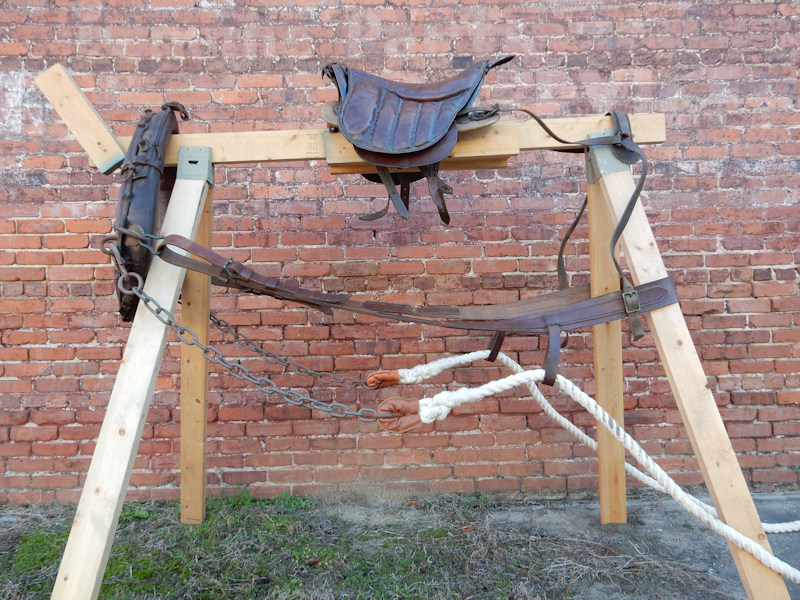 |
Above: A more detailed view of the wheel team driver saddle and harness set made up of the 1864 saddle
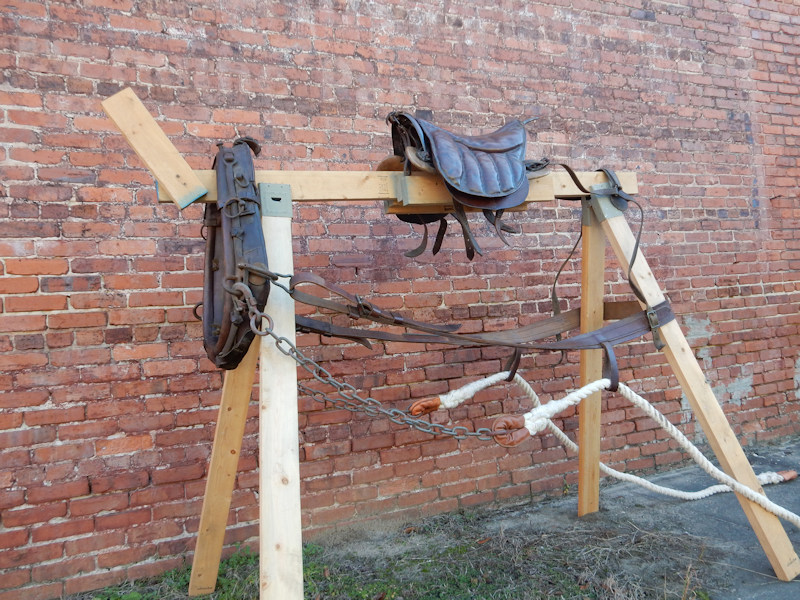 |
Above: A more detailed view of the wheel team driver saddle and harness set made up of the 1864 saddle
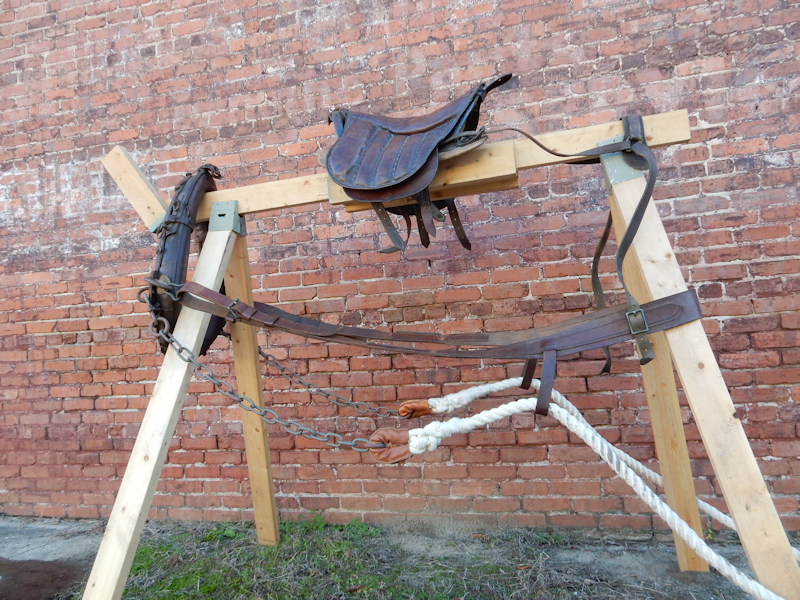 |
Above: A more detailed view of the wheel team driver saddle and harness set made up of the 1864 saddle
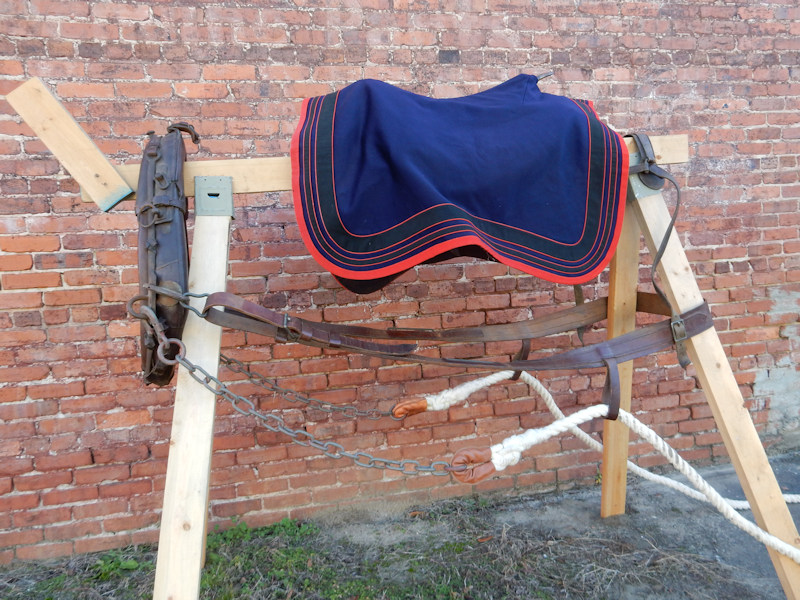 |
Above: A wheel team driver saddle and harness set made up of the 1864 saddle with the parade cover for artillery service
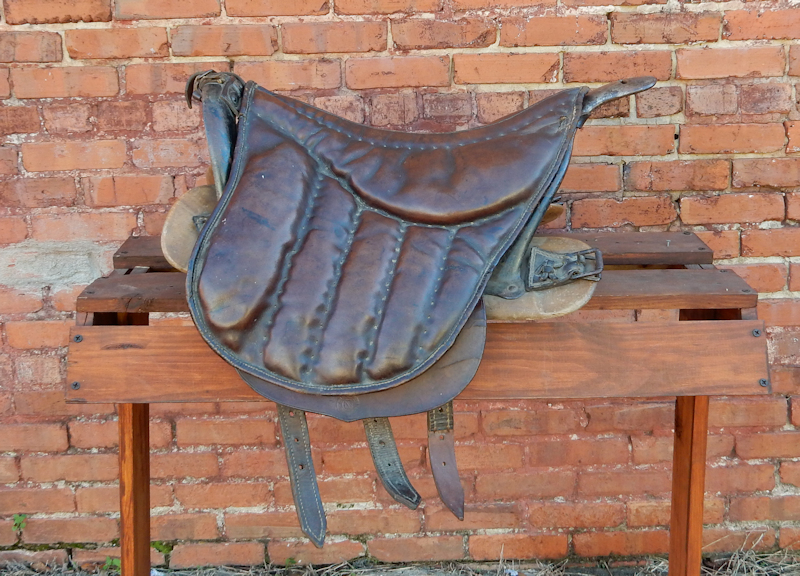 |
Above: An example of the 1864 saddle with cover over the tree. This saddle was used by Trains and Field Artillery units
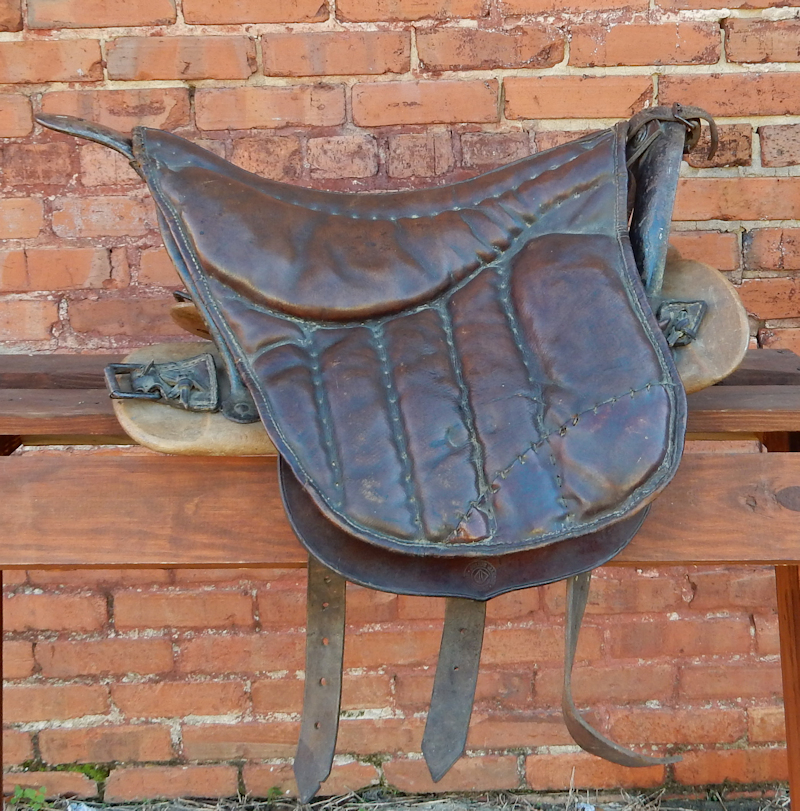 |
Above: An example of the 1864 saddle with cover over the tree. This saddle was used by Trains and Field Artillery units
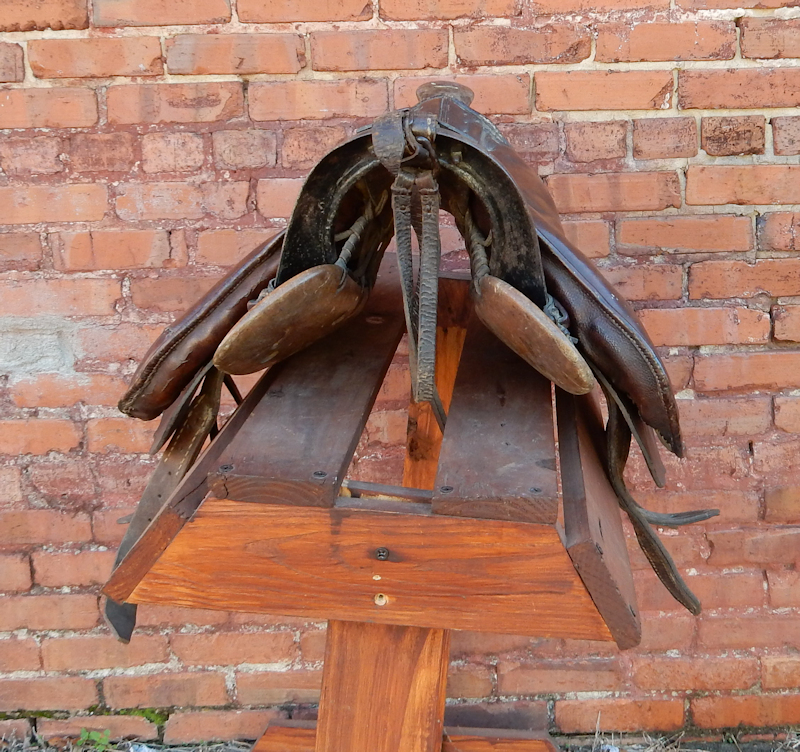 |
Above: A front view of the 1864 saddle with cover over the tree. This saddle was used by Trains and Field Artillery units
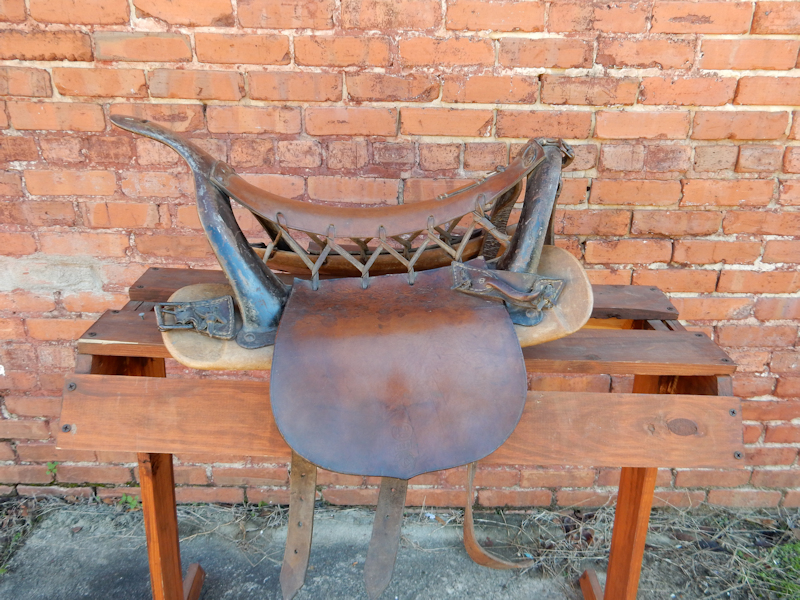 |
Above: An example of the 1864 saddle tree. This saddle was used by Trains and Field Artillery units
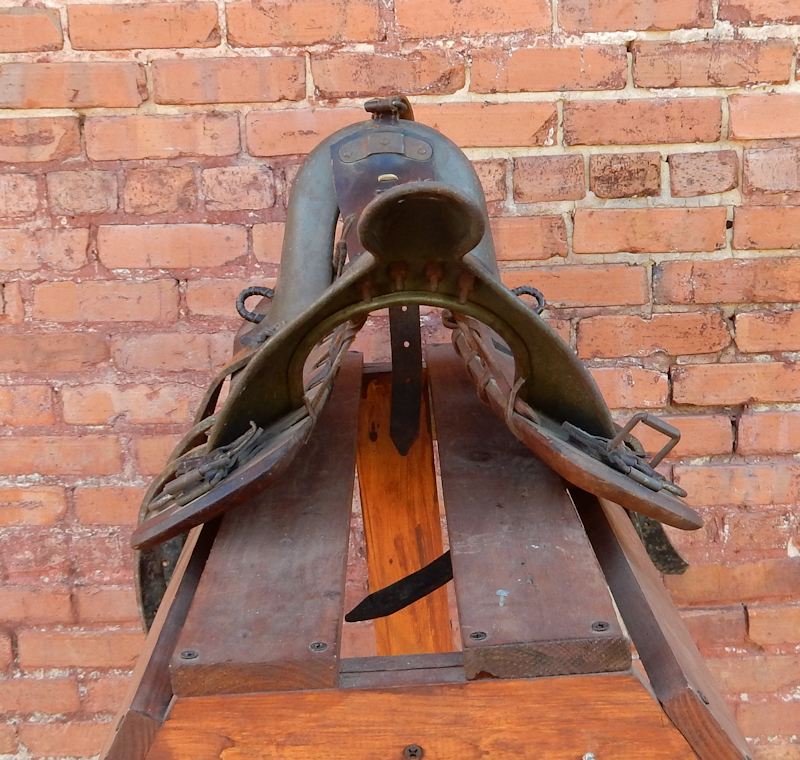 |
Above: A rear view of the 1864 saddle tree. This saddle was used by Trains and Field Artillery units
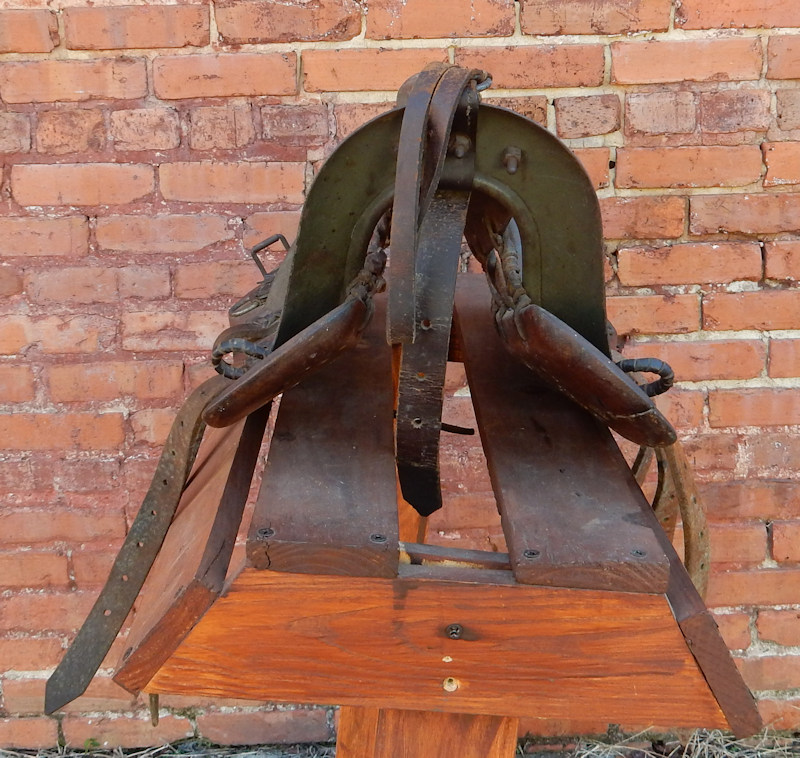 |
Above: Front view of the 1864 saddle tree. This saddle was used by Trains and Field Artillery units
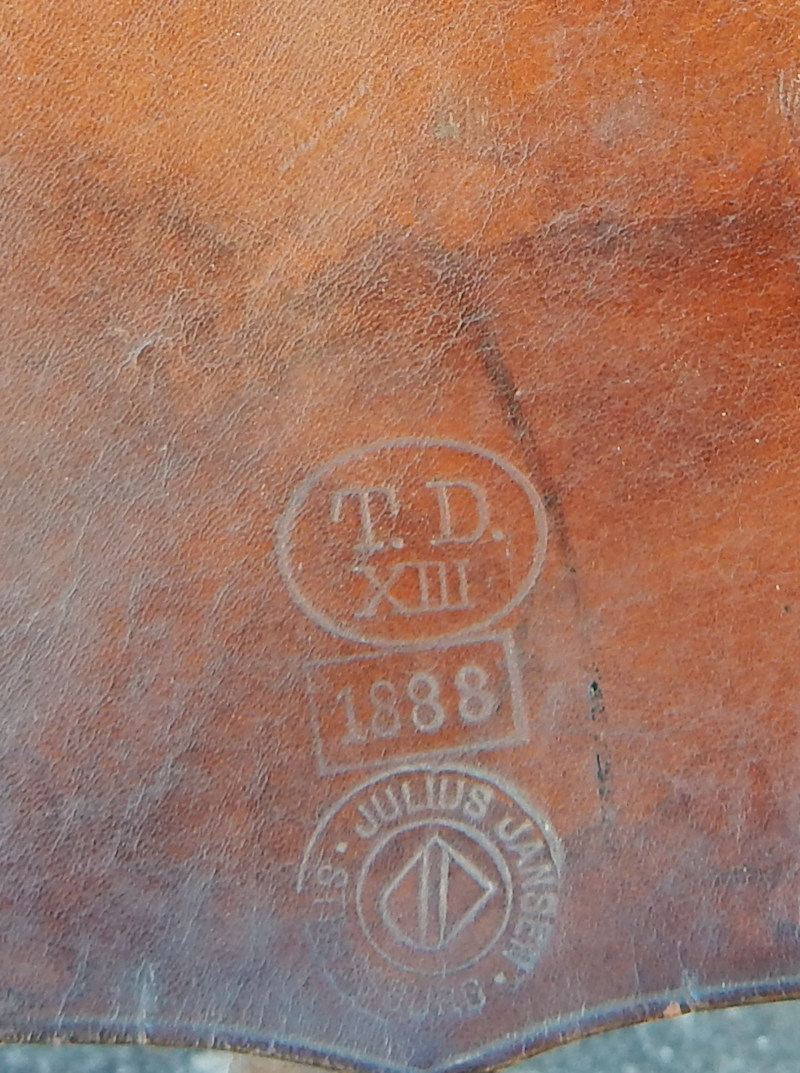 |
Above: Trains unit marks for the XIII Corps along with an 1888 date and manufacturer mark to the Julius Jansen company located in Strassburg
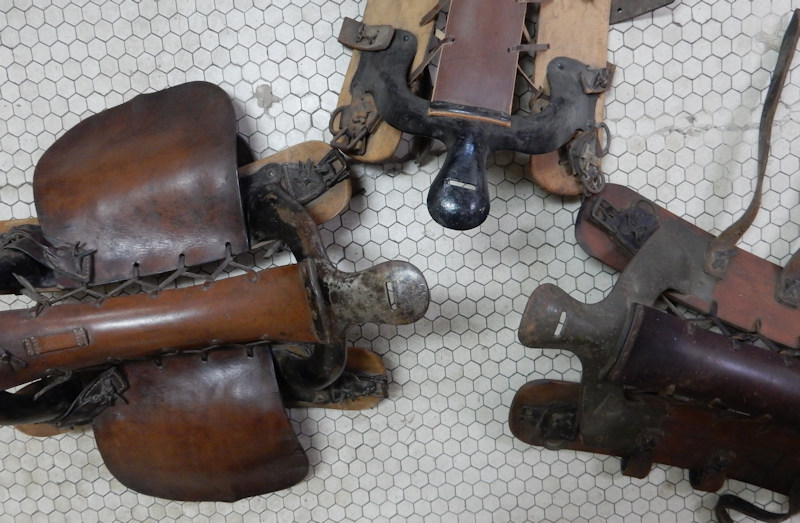 |
Above: Three variations of the Prussian Field Artillery saddle. The one to the left is the 1864 Pattern with a flat spoon like cantle, to the right is the more common 1873 Pattern tree with a concave spoon shaped cantle, and the top one is some variation I have not quite identified. It looks much like the 1864 but has a slightly curved cartel but not so much as the 1873
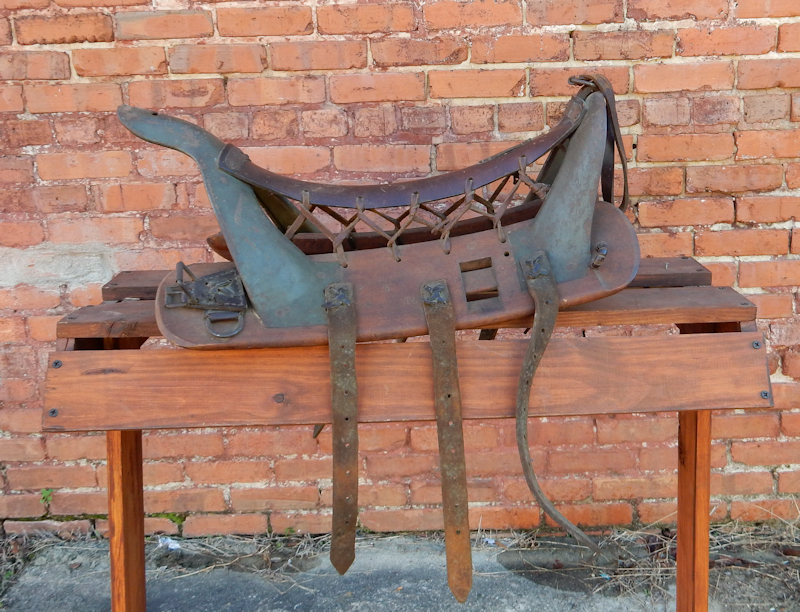 |
Above: An 1873 Saddle Tree
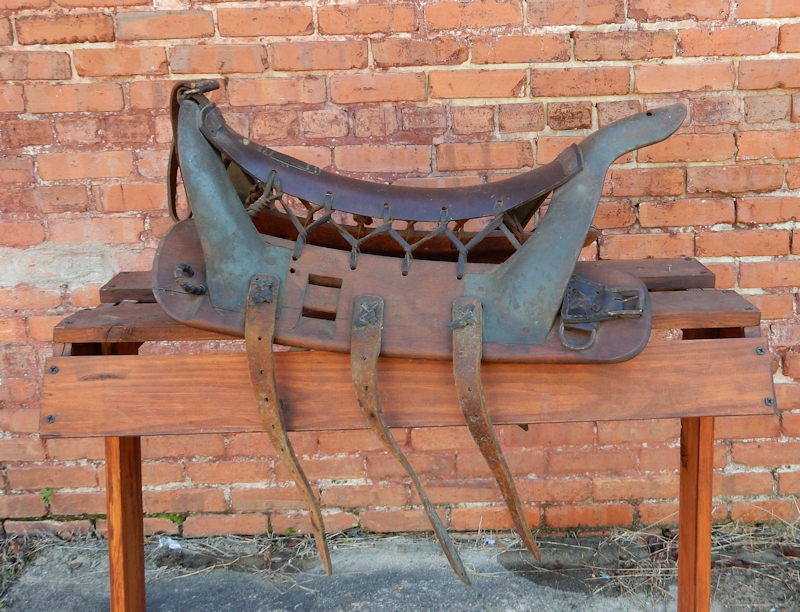 |
Above: An 1873 Saddle Tree
Below Left: German, Prussian Bochsattel 1873 Field Artillery Driver Saddle. Below Right: The tree or frame for the saddle. Notice the tongue at the rear of the saddle has been cut off. It appears that this was done some time ago also the metal parts of the tree are pained teal green. Although this is not a regular German Army paint color this was a common industrial paint color in the 1900s.
Below: Close up of the padding ( Sattelkissen ) for the Field Artillery Saddle.
Below Left: Underside of the padding. Below Right: Overview of the saddle tree.
Below: Horseshoe pouch of the saddle ( Hufeisentasche ).
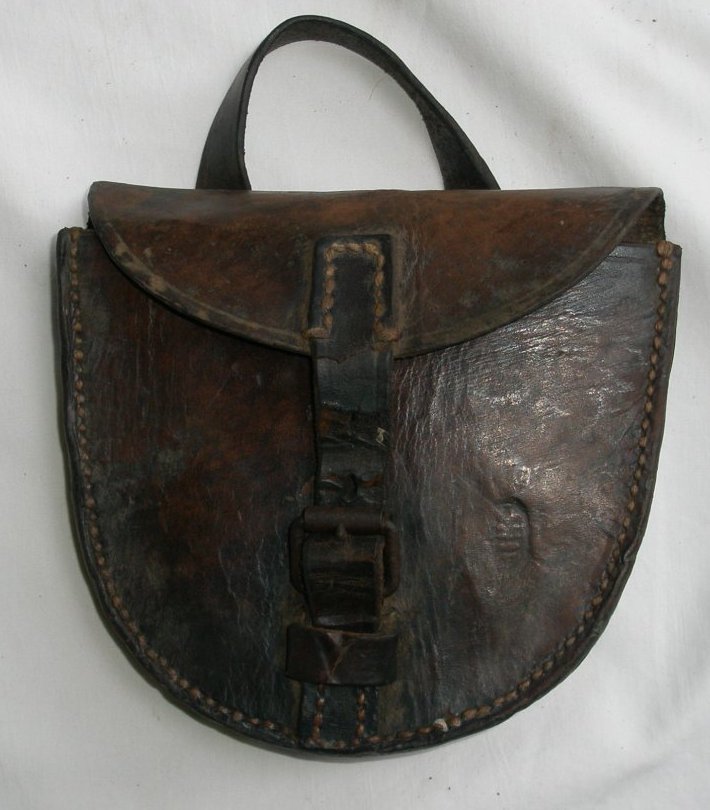 |
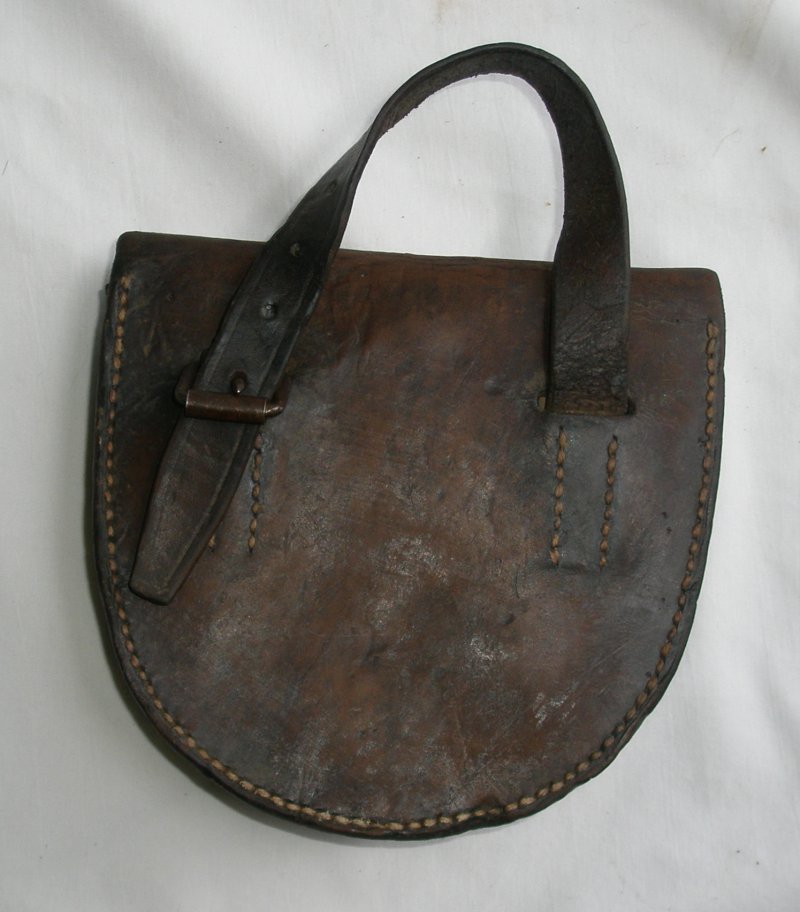 |
|---|
Photograph Below. Close up of the most common German Field Artillery Horse Collar. This example has a wartime date and manufacture’s mark.
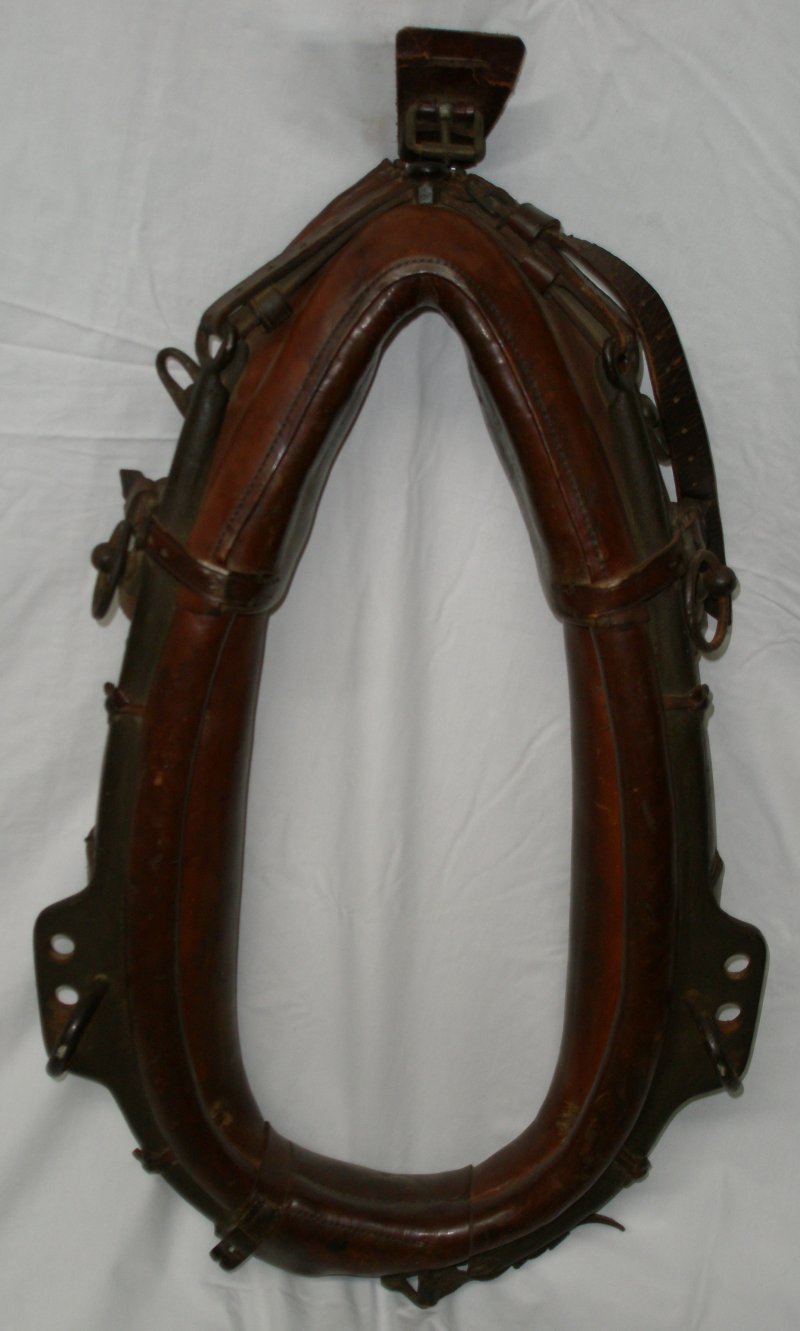
Below: Two standard German, Prussian Field Artillery horse collars. The top one has the D-ring for use as a wheel team collar, whereas the bottom collar has no D-ring and would be used for lead team and swing team service
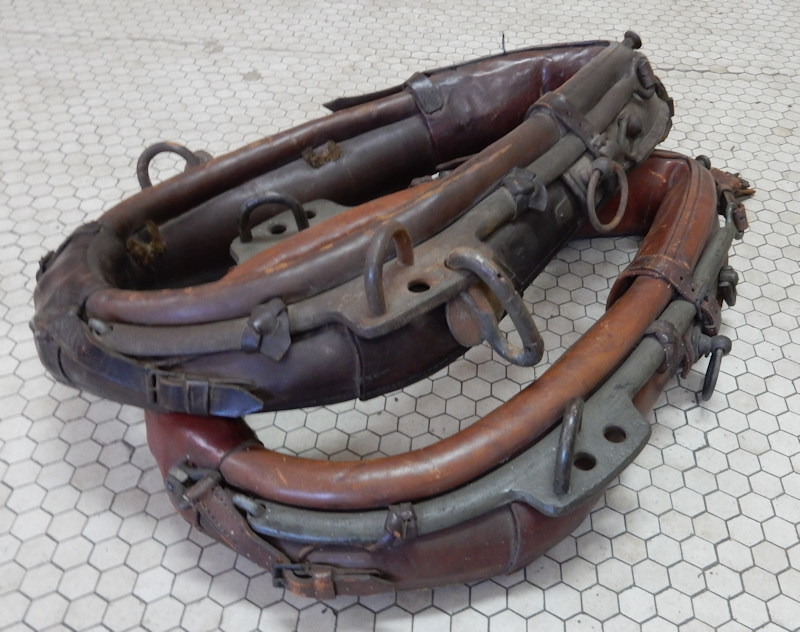 |
Below: The photograph below shows three variations of German Field Artillery Horse Harnesses. On the right is the Bavarian Pattern with metal and leather construction. Note that it does not have a hames. Center is what I believe to be an older variation of the Prussian Field Artillery Collar. Left is the most common Prussian/German Field Artillery Horse Collar of these same type in the above photograph.
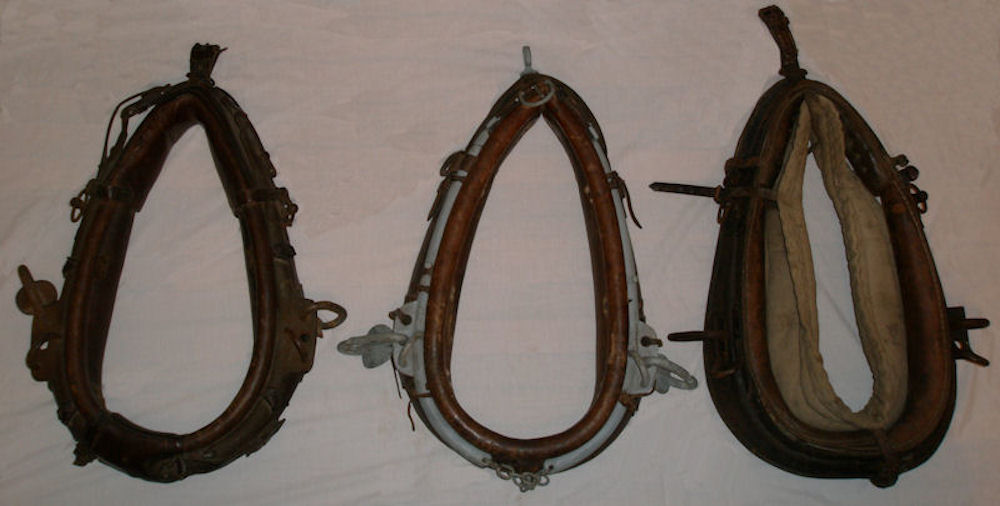 |
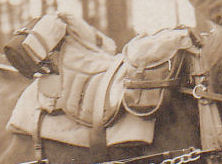 |
Below: Depot mark for Artillery Works Spandau
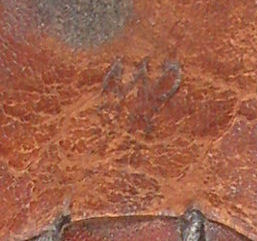 |
Below: The top breeching is for German Foot Artillery service, the bottom breeching is a German, Prussian Field Artillery breeching
Below: Lead and Swing Teams with an independent rider alongside the lead team
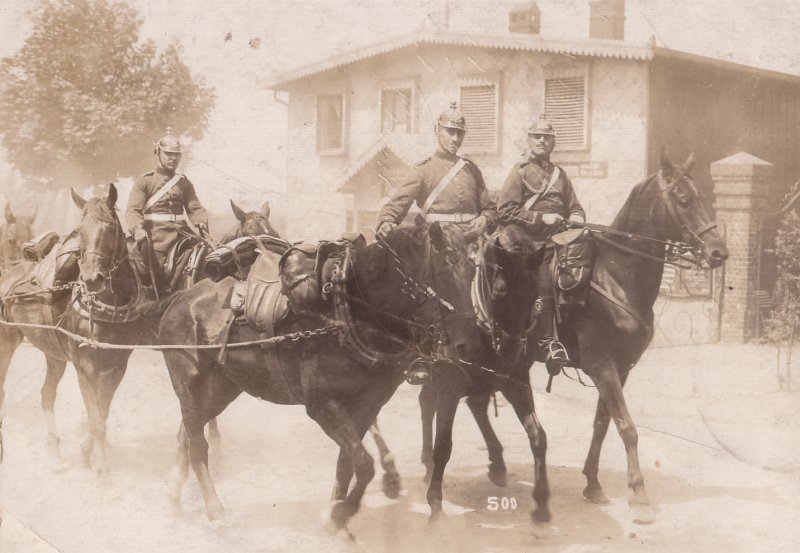 |
|---|
Below: A view of the Lead, Swing Teams and Wheel Teams shown from the left side
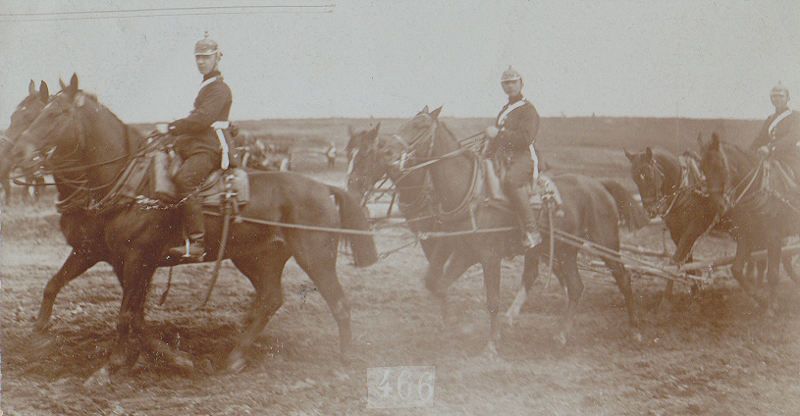 |
Below: Another view of the Lead and Swing Teams with an independent rider alongside the lead team
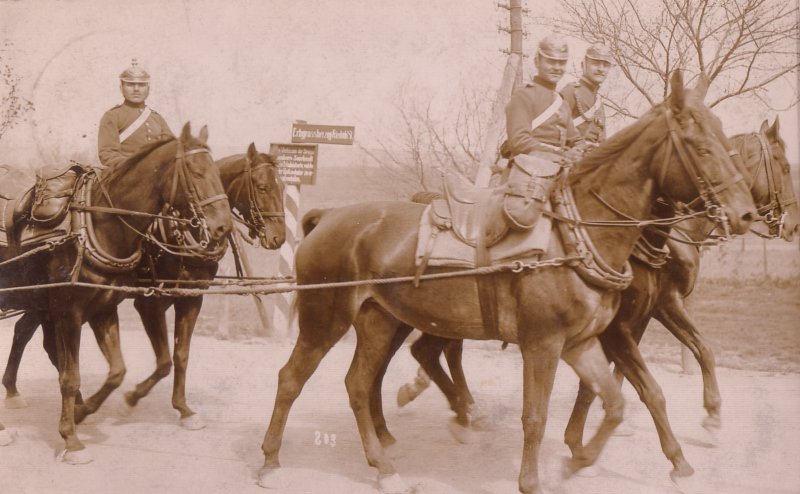 |
|---|
Below: A 7,7cm lFK 96 with independent riders and the lead and swing drivers for the following team
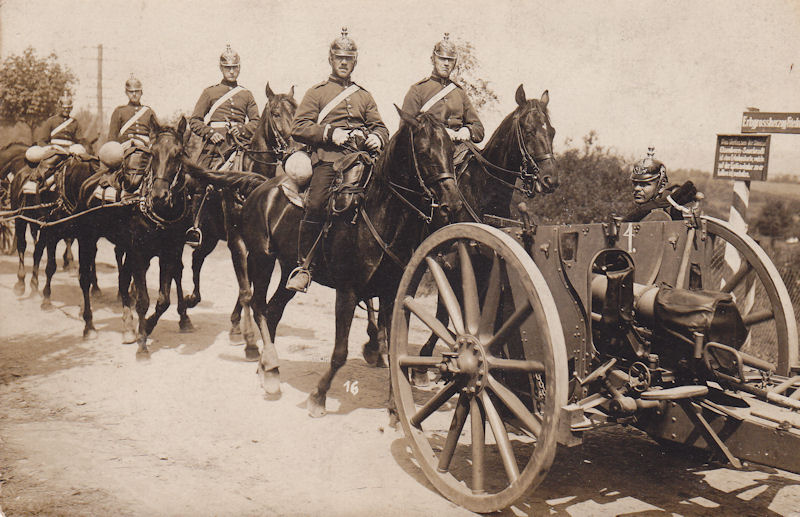 |
Below: A 7,7cm lFK 96 with a Wheel Team and Swing Team visible in the photograph
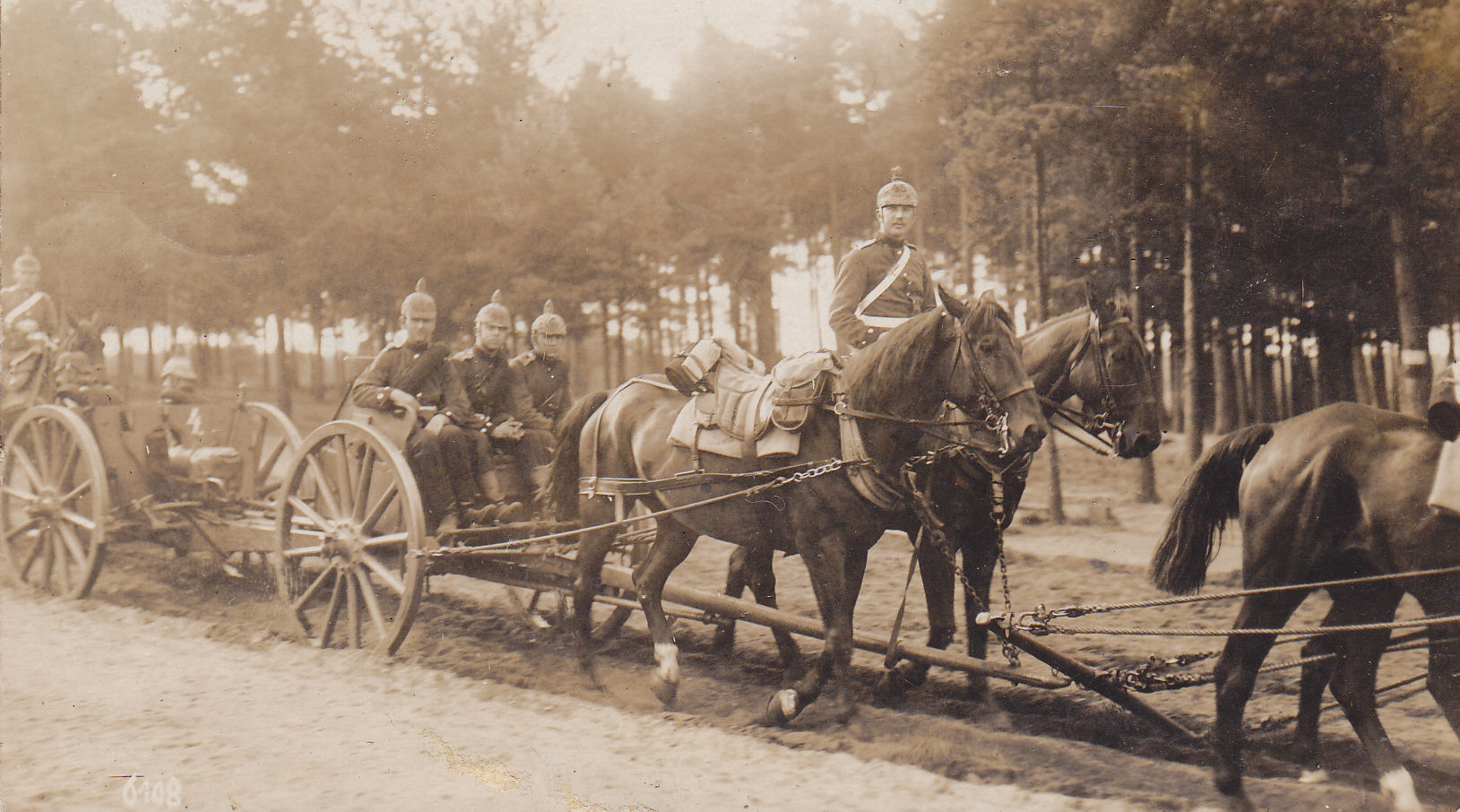 |
Below: An excellent example of a typical WW1 Era German Field Artillery six horse driver team
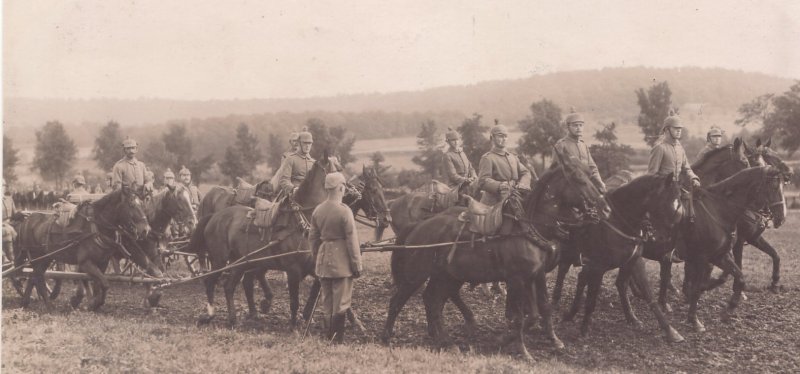 |
Below: A close up of the earlier photograph. This shows detail of the Wheel Team and Whipple Tree rigging for the Swing Team
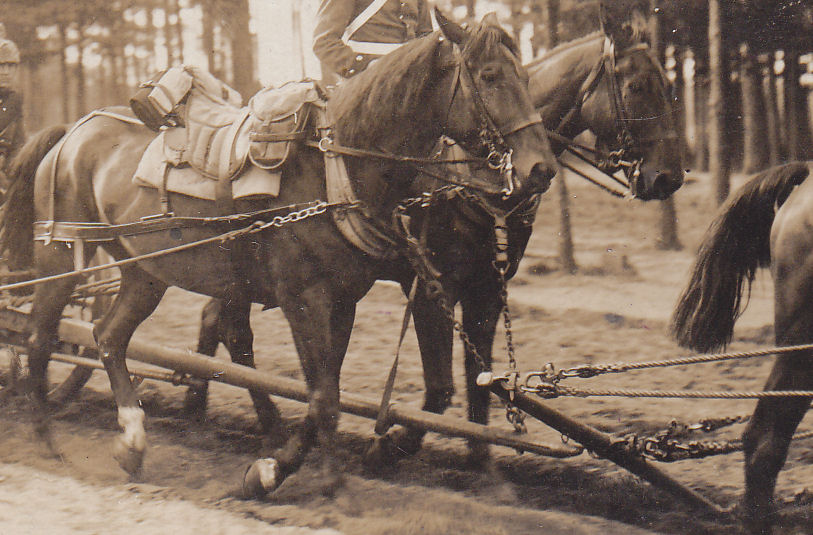 |
Below Left: Whipple Tree with J-Hook close up. Below Right: Whipple Tree J-Hook
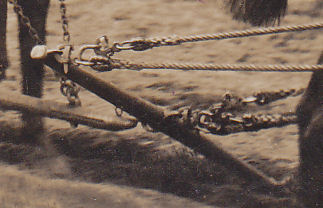 |
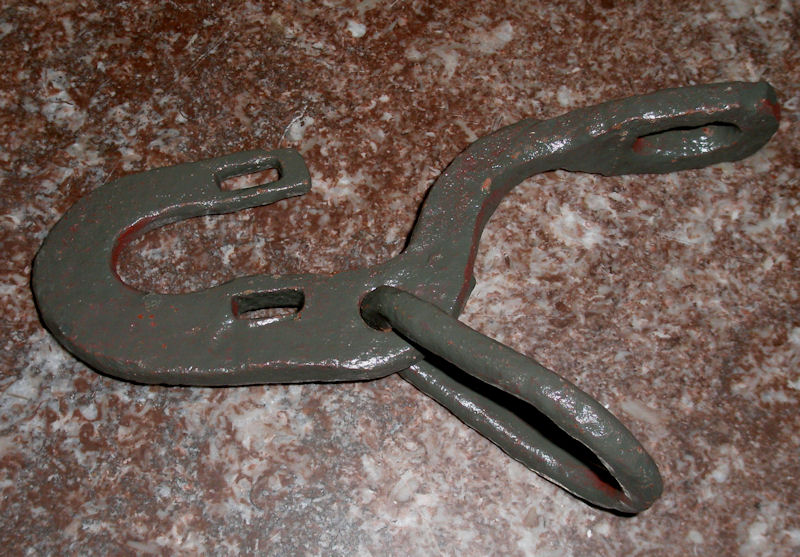 |
Below: A soldier from Artillery Colum 459 in a 1917 dated photograph. It is interesting that the saber is mounted on the saddle and the older style bit is being used this late in the war
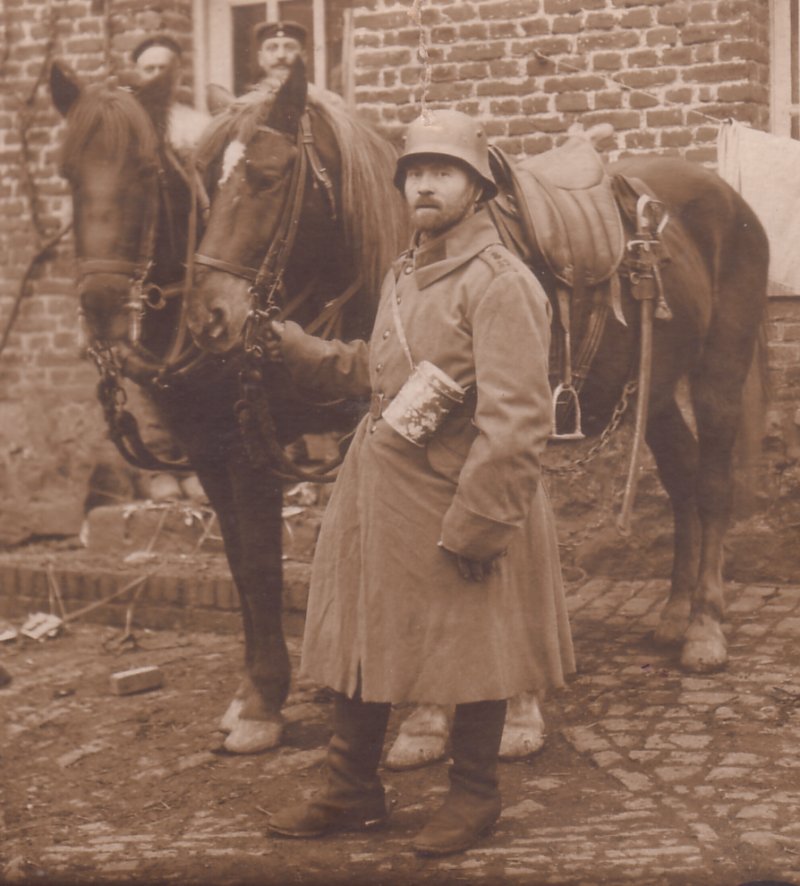 |
Drawing Below. Valise Saddle & Collar for Field Artillery
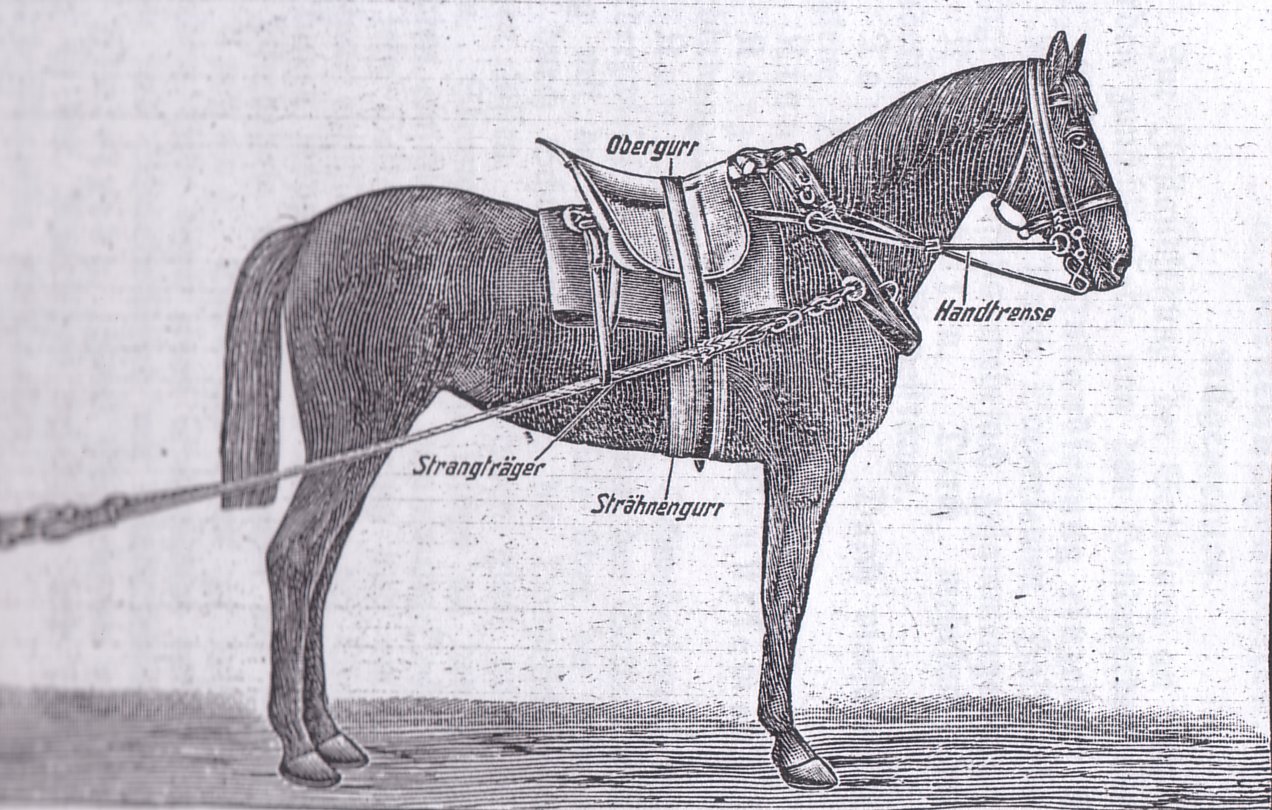
Above & Below. Valise Saddle for Field Artillery. This illustration shows one of six horse saddle and harness rigs which hook up to the limber for towing the field artillery piece or caisson (munitions wagon). The saddle has a wooden tree unlike the Foot Artillery Saddle. A leather padded seat is set over the wooden saddle tree. A collar and hames (iron frame) harness fits around the horse's neck. Trace lines hook from the the hames to the limber. In the Post-War Weimar Period both Field and Foot Artillery adopted the cavalry style saddle.
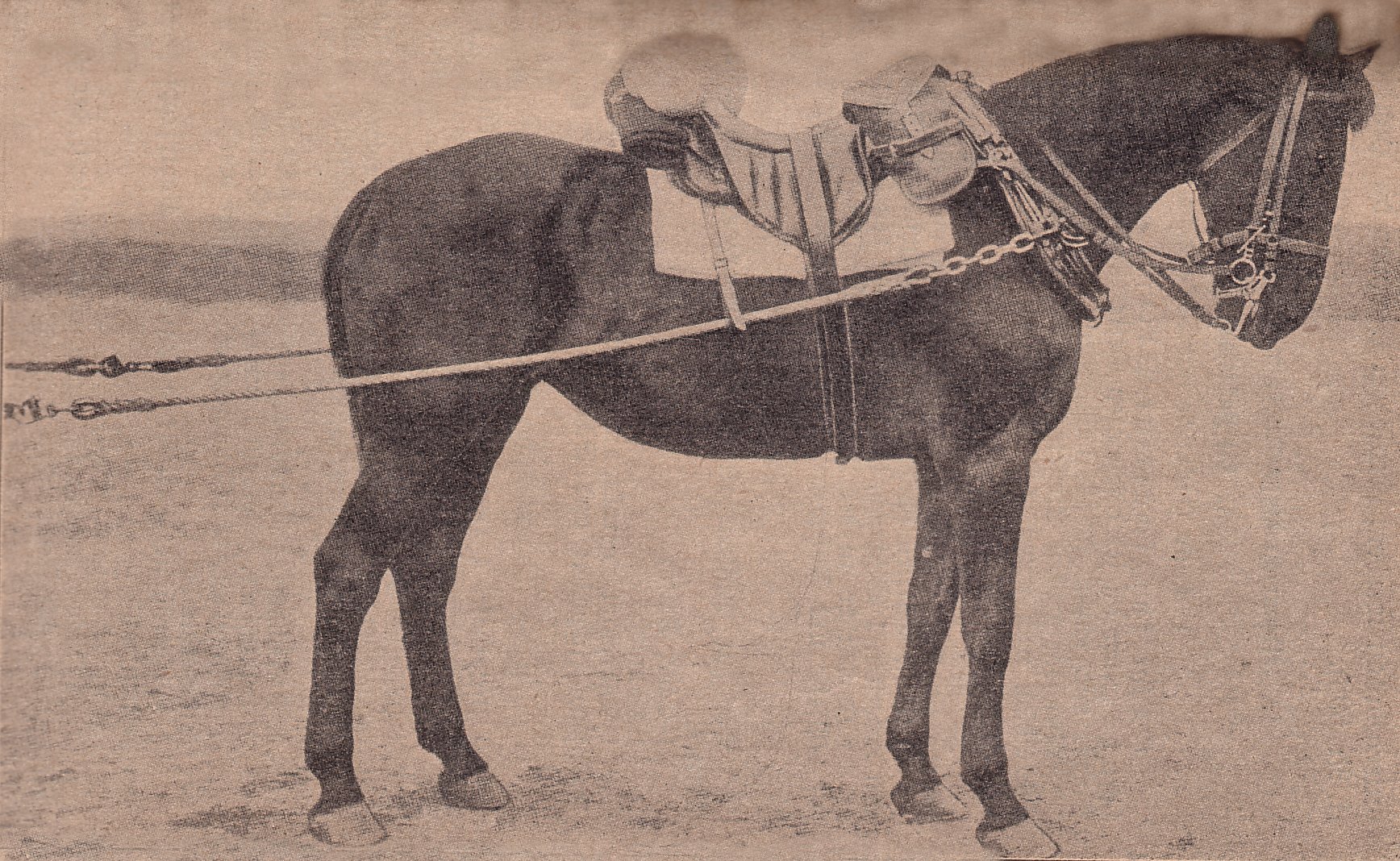
Photograph Below. Horse Collar and Driver's Saddle rigged for a rider. The Saber is the standard Prussian style EM's service saber.
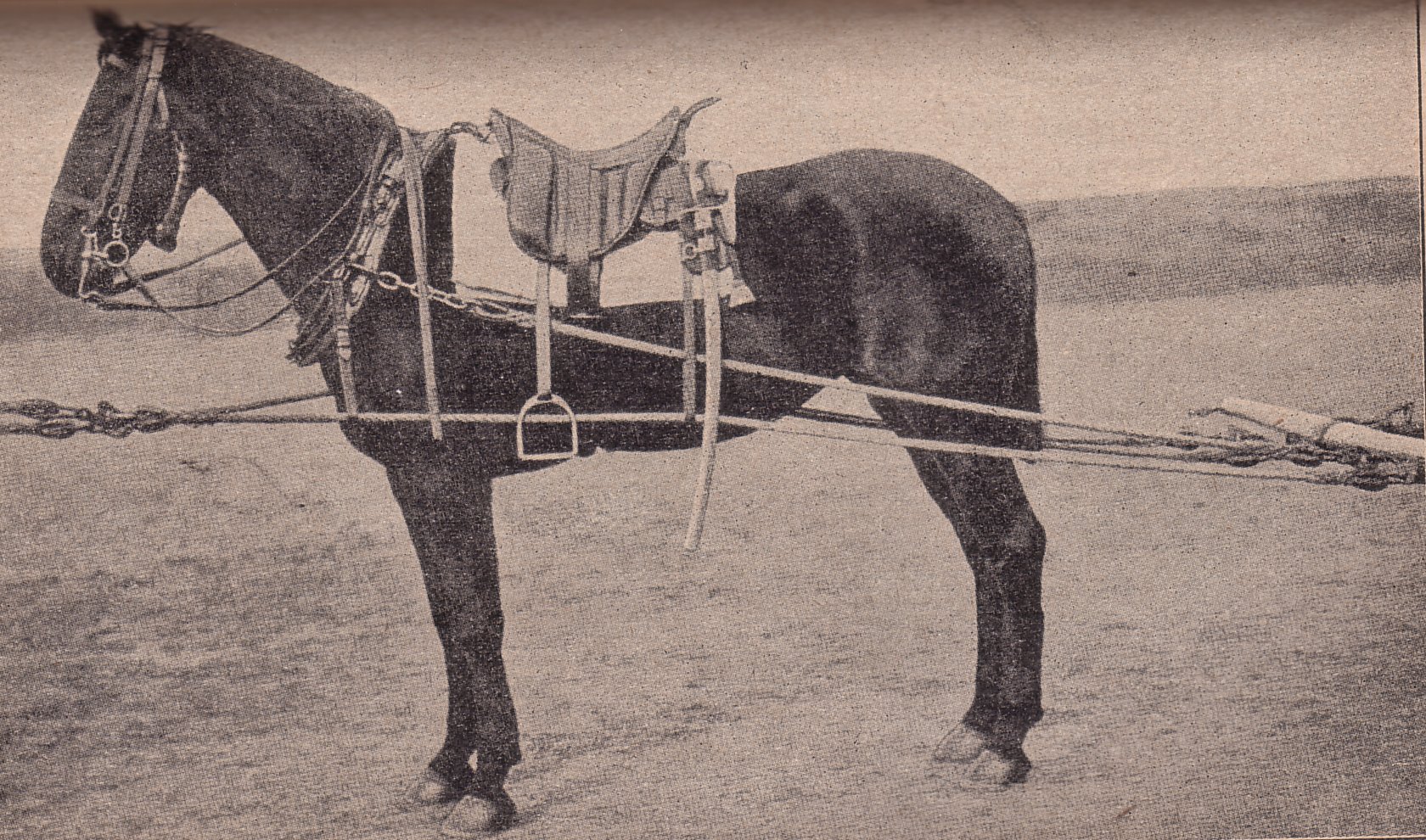
Drawing Below. A Rope Trace and Breaching for use with the Field Artillery Saddle. This Breaching was used regularly with the Prussian and Bavarian Field Artillery Saddle. It also appears that this Breaching was sometimes used as a harness without the regular collar. This is illustrated in the lower photograph.
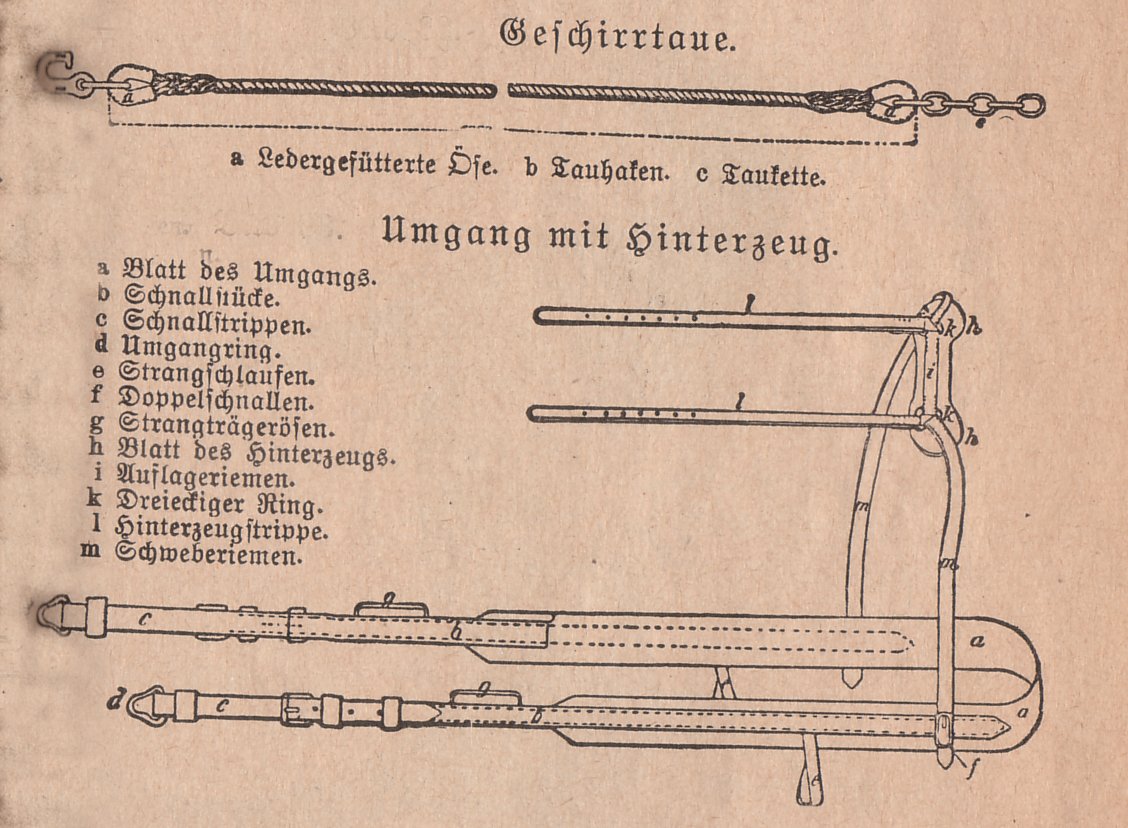
Photograph Below. I do not yet have a good explanation for this one. It appears to be the above Breaching set up as a harness with a 7,7cm lFK Limber. This is the only photograph I have ever seen of this rig. I believe, it may have been an improvised or field expedient way of rigging the limber. I do not believe the harness was in common service like this. With additional work on translation of the manual, I should have a more definitive answer.
. 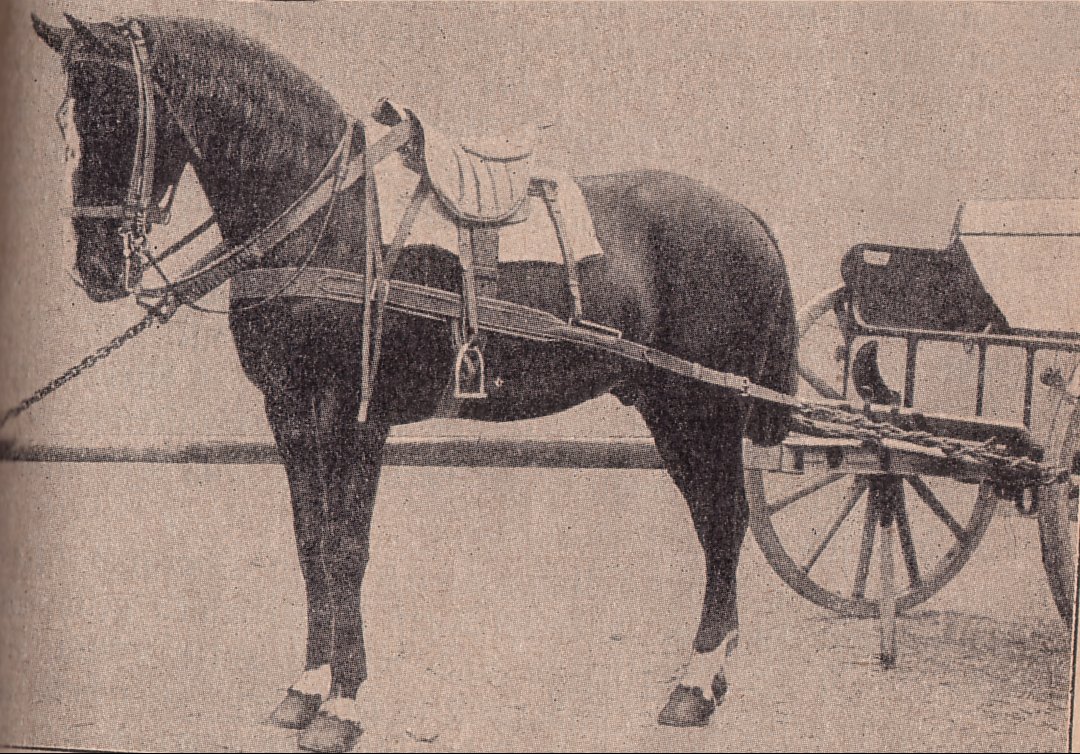
Below: A WW1 Era German Army wagon. The horse is equipted with a Field Artillery type collar.
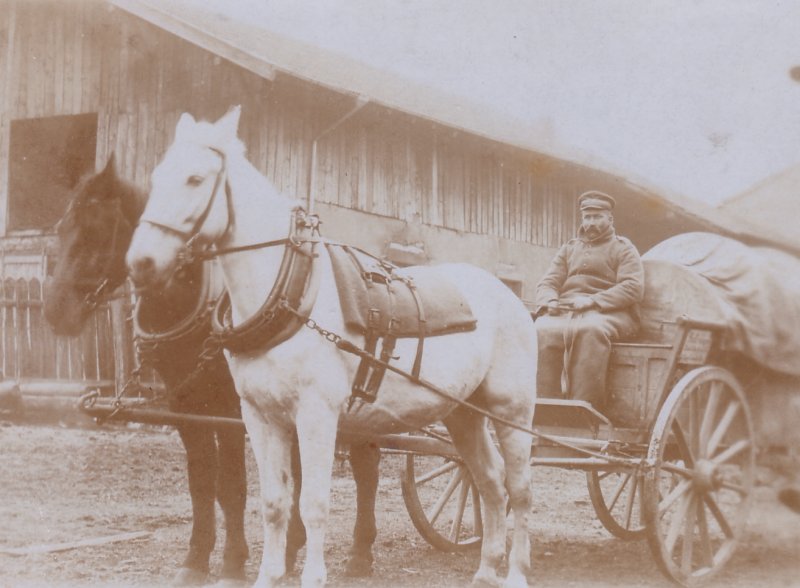 |
|---|
For the 10,5cm light Field Howitzer Limber see this page
For the 7,7cm lFK 1896 Limber see this page
All images, research, and text are sole property of Ralph Lovett.